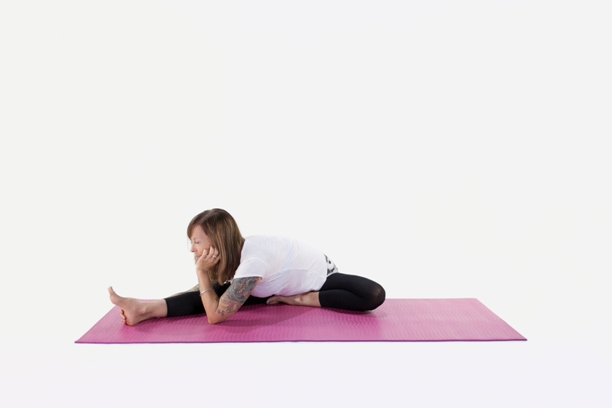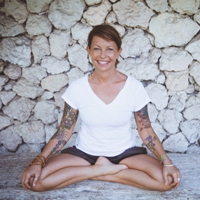
Practicing yoga in any form or style is an exceptional way to increase focus and to experience stillness of the mind. A great emphasis is put on yogis to focus and concentrate throughout the practice through the use of the bandhas (energetic locks), the breath, the gaze and visualization, all of which are intended to keep the practitioner in the moment.
The practice of yin yoga requires us to stay in various positions for long periods of time, anywhere from two to 15 minutes per pose. It targets the meridian system, the system of energy channels that run through the body that are associated with certain organ or system function. Yin gets into the deeper tissues, (ligaments, tendons, bones, and fascia) lengthening the physical body and creating more freedom in the flow of energy. Dreams, memories, and emotions that get stuck in the physical body also get lengthened and released during the practice. In this practice there is an emphasis on quieting the mind and observing the stillness.
This cultivates a place in our mind where we can sit in the present moment and be lead toward true happiness.
It is a gift to ourselves to set aside time and space to let the mind wander, to attach to our thoughts and see where they may lead. Through the dark and windy roads of the vast spaces in our minds and hearts; through which we rediscover and review our forgotten passions, the dreams of our childhood that have slipped away and future plans that have faded. We can begin to bring light to incredibly creative thoughts and ideas that too often get muffled by focus, lack of confidence, and other interferences that bombard us daily.
Most of my week is governed by focus, schedules, time management, and a list of things to do. The opportunity that I take in my yin practice to revel in the altered state of daydreaming is some of the most rejuvenating and nourishing moments I can possibly create for myself. The art of accomplishing nothing and allowing the mind to wander often reveals to me another solution to a problem, another level of willingness, and refreshing optimism, and always results in leaving me feeling whole and satisfied, incredibly curious and inspired. These experiences then become a catalyst for art projects, writing, or ideas for teaching yoga.
Inevitably, memories and old hurts often arise naturally through the shapes I make with my body. They come to the surface and flow through me. And in these moments I’m able to decide whether they still serve me, or not. Sometimes I find myself daydreaming about something I’ve been procrastinating, I can envision myself finishing, feeling satisfied and far more inspired to actually finish what it is that I have been putting off.
Recent research shows that daydreaming is a time when the brain consolidates learning, and may also help with sorting through problems and achieving success. The areas of the brain associated with complex problem-solving become activated during daydreaming episodes. Eric Klinger did a study in the 1980s revealing that most daydreams are about ordinary, everyday events and serve to remind us of mundane tasks. [1]
Whether it’s memories, artistic ideas, mundane tasks, or future plans, let them flow. Even better, and something I do often and suggest to students in their own practice, is to keep a notebook and pen by your mat. I’ve had some of the most inspired ideas during a yin practice that I could not remember later. Keeping something to write with next to me allows them to run their course and for me to remember them later. The healing that my emotional and physical body has gone through during the process of yin, daydreaming, and journaling has been exceptional.
When you’re finished with the daydreaming, it’s easy to shift to the practice just by noticing the soft rhythmic sound of the breath and how the body moves with each inhale and each exhale. It will bring you back in an instant. Back into your body, back into your practice, and back to the present moment.
~
References:
[1] Klinger, Eric. “Goal Commitments And The Content Of Thoughts And Dreams:
Basic Principles”. Frontiers in Psychology 4 (2013)
~
Author: Denise Payne
Editor: Travis May
Photo: Author’s Own










Read 0 comments and reply